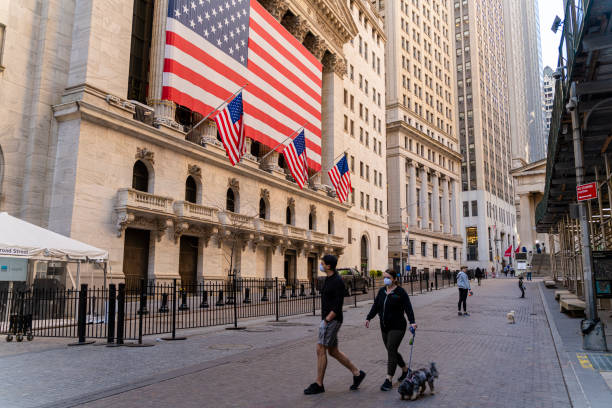Morgan Stanley says markets are rising, but the U.S. economy is weakening

Markets are going up, but the U.S. economy isn’t exactly keeping up. That’s what Morgan Stanley is warning this week in a new report led by strategist Ariana Salvatore, as stocks continue to rise even while key economic signals weaken.
As of press time, the S&P 500 has climbed nearly 10% since January, the Nasdaq Composite is up more than 11%, and the Dow Jones Industrial Average is ahead by over 7%. But under the surface, things aren’t looking so great.
The report points to Donald Trump’s return to the White House and a wave of new policies; some rushed, some recycled. He’s extended tax cuts from his first term, added new tariffs, and placed tighter limits on immigration.
The changes have brought concern across Wall Street, especially around how they’ll impact consumer spending. At the same time, job growth is slowing and inflation is still above the Federal Reserve’s 2% target.
Trump’s policies hit sectors unevenly
Ariana’s team at Morgan Stanley believes the gap between economic health and market strength comes down to how different industries are affected by Trump’s actions. Some are hurting, but others are thriving, and the ones doing well have more weight in the index.
That’s what’s keeping the broader market up. “Tariffs are a clear headwind to margins for certain industries,” Ariana explained, “but the overall market cap weight of these groups is limited.”
The negative impacts, tariffs, and immigration rules, are mostly falling on smaller sectors that don’t drive much of the S&P 500’s value. At the same time, sectors benefiting from tax breaks and deregulation, like tech and industrials, are spread more widely across the index.
“In short,” Ariana added, “the negative impacts are concentrated in sectors that do not represent a significant portion of S&P market cap, while the tailwinds are more dispersed among a broader cohort that drives index-level performance.”
This uneven outcome means Wall Street is looking at things on a sector-by-sector and even company-by-company basis. They’re not treating the economy like one big picture. That’s why the market is moving up even as hiring slows and inflation holds firm.
Ariana explained that the macro backdrop is getting weaker, but not enough to drag everything down or cause a recession. Stocks, in that setup, can still perform.
One sector under pressure is consumer discretionary. These companies are getting hit hardest by Trump’s tariffs and immigration rules. They rely on cheaper goods and labor, both of which are becoming harder to find or more expensive.
Meanwhile, industrials and semiconductors are still holding strong. Artificial intelligence is playing a big role here, pushing up demand and keeping those sectors steady. Even with volatility in Trump’s trade policies, fundamentals in those industries remain intact.
Healthcare falters, Fed hints rate cuts coming
But healthcare? That’s where things look ugly. Eric Teal, chief investment officer at Comerica Wealth Management, said the sector is facing more than just a bad quarter.
“Although the on-again-off-again tariff policies on the surface appear volatile,” Eric said, “the economy is in the middle of an expansion and company fundamentals are solid with one notable exception, health care,” calling it an “existential threat to profit margins.”
Healthcare firms are getting squeezed on costs, regulations, and pricing pressure, and investors are pulling back. Even big names are stumbling. Microsoft, Netflix, Walmart, and Apple all fell this past week, and the S&P 500 just clocked five straight days of losses through Thursday.
It’s the longest losing streak in months. But Friday brought some relief. Federal Reserve Chair Jerome Powell spoke at the Fed’s annual Jackson Hole event and opened the door to potential interest rate cuts as soon as September.
Still, some analysts think the pullback is just part of the cycle. Let’s see what time will prove.
KEY Difference Wire helps crypto brands break through and dominate headlines fast







